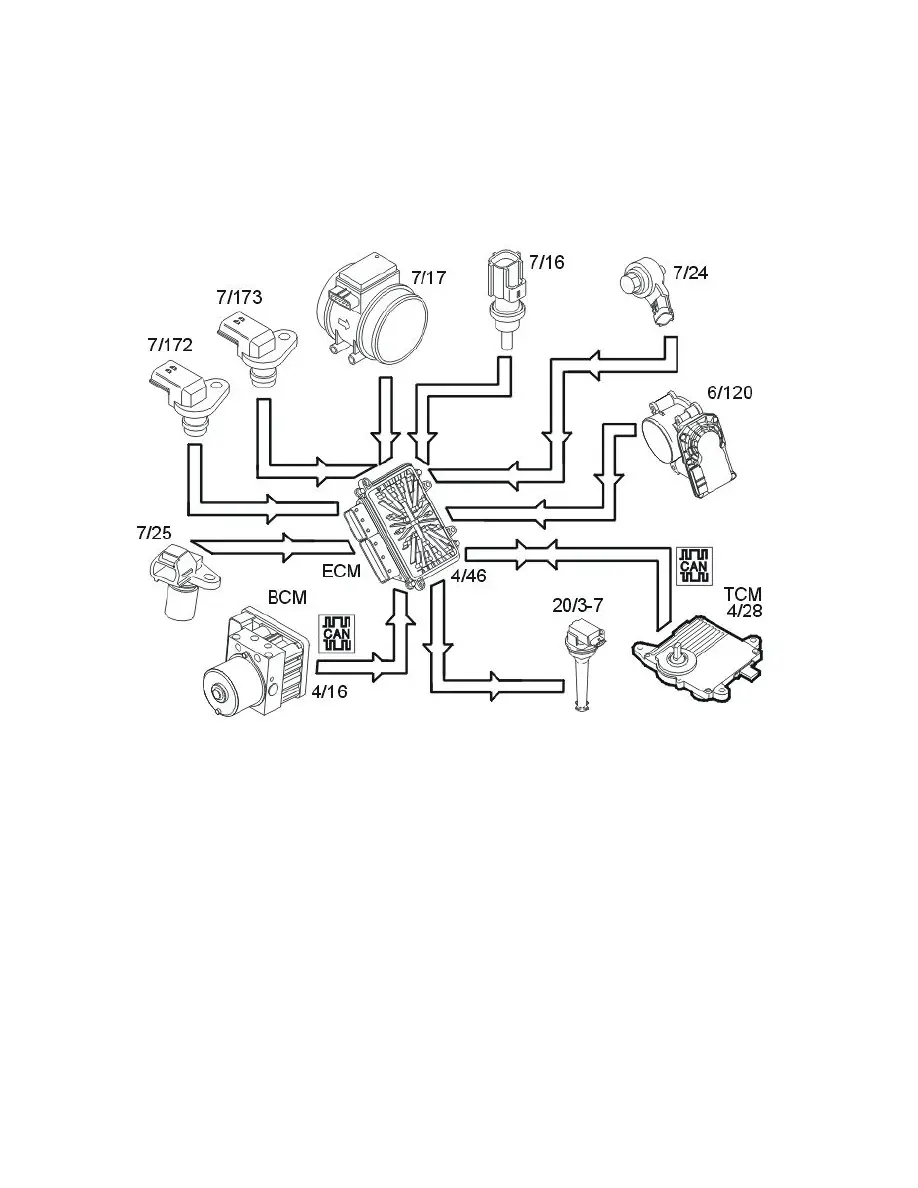V50 L5-2.4L VIN 39 B5244S7 (2005)

increases rapidly and there is a mechanical knocking sound.
If any of the cylinders knock there is a specific type of vibration in the cylinder block. These vibrations are transferred to the knock sensor (KS) which is
screwed into place in the cylinder block. The resulting mechanical stress in the piezo electrical material in the knock sensors generates a voltage. The
engine control module (ECM) can then determine which cylinder is knocking with the help of the camshaft position (CMP) sensor and the engine speed
(RPM) sensor.
The knock sensor (KS) also senses some normal engine sound. The control module is able to recognize the vibrations which correspond to knocking by
filtering, amplifying and using software to evaluate the signal.
If the knock sensor (KS) detects knocking in the engine above a certain threshold value, the ignition timing is first retarded and then the fuel/air mixture
is enriched to eliminate knocking.
Ignition control
The following components are used for ignition control:
-
engine speed (RPM) sensor (7/25)
-
camshaft position (CMP) sensor (7/172-7/173)
-
mass air flow (MAF) sensor (7/17)
-
engine coolant temperature (ECT) sensor (7/16)
-
throttle position (TP) sensor on the electronic throttle unit (6/120)
-
knock sensor (KS) (7/24)
-
transmission control module (TCM) (4/28)
-
spark plugs with ignition coils (20/3-20/7)
-
brake control module (BCM) (4/16).
The engine control module (ECM) calculates the optimum ignition advance based on the software and information from the sensors. The engine control
module (ECM) cuts the current to the ignition coil mounted on the cylinder to be ignited and produces a spark.
During the starting phase the engine control module (ECM) produces a fixed ignition setting. When the engine has started and the vehicle is being
driven, the engine control module (ECM) calculates the optimum ignition setting, taking factors such as the following into account:
-
engine speed (RPM)
-
load
-
temperature.
The engine control module (ECM) analyses the signal from the knock sensor (KS) when the engine reaches operating temperature. If any of the cylinders
knock, the ignition is retarded for that specific cylinder until the knocking ceases.
The ignition then advanced to the normal position or until the knock recurs.
Before the transmission control module (TCM) changes gear, it sometimes transmits a torque limiting request to the engine control module (ECM). The
engine control module (ECM) then retards the ignition momentarily to reduce the torque, resulting in smoother gear changes and reducing the load on
the transmission. There are different ignition retardation levels depending on the signals from the transmission control module (TCM). The return signal
from the engine control module (ECM) to the transmission control module (TCM) confirms that the signal reached the engine control module (ECM).
